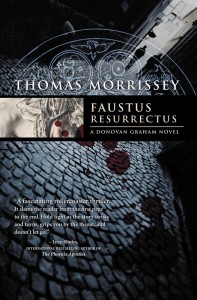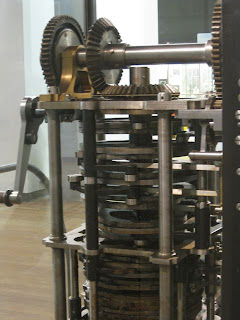Now that that's out of the way (and hopefully the apology's accepted, not that I really need one), it's review time! This week it's not a book, but a series, and a series I'm three books behind in to boot. But it's entirely and absolutely made of awesome, so I'm going to tell you about it anyway.
Also, please, if you've read these books, no spoilers. All I know of books 5–7 is what's on their back covers, which are, predictably, non-commital as to plot and such-like. I'd like to keep it that way.
I picked up the first book in the Temeraire series by Naomi Novik because I needed something to read, it was in the library, and I'd vaguely heard it was good. Also because it had dragons, and I'm a sucker for dragons. Some people go for fairies or mermaids or werewolves. I go for dragons.* It was a really good read, but not a great enough one to compel me to the nearest library/bookstore for the second book. But eventually I ended up in front of Throne of Jade in a bookstore and, through fond memories, bought it. The way Novik expanded on the world, characters, and themes of the first book hooked me and I've been reading roughly a book a year ever since.**
The premise of the series is this: Captain William Laurence of the Royal Navy captures a French ship that's transporting a dragon's egg to Napoleon. The egg hatches before Laurence's ship reaches England and the hatchling imprints on Laurence. Laurence and Temeraire, the dragon, are drafted into the Aerial Corps, which means culture shock (the Corps is permissive compared to the Navy), a steep learning curve, distrust on both sides, and the requisite thrilling aerial battles. Every book takes place in a different area of the world, so we see how different cultures deal with having tamed and/or domesticated dragons. Which is utterly fascinating, but not why I've come to love the series.
I love the series because it's about a proper, upper-class British citizen (and a dragon) discovering human rights and becoming rights activists. Except for "human", I mean "dragon". The way Novik's coaxed Laurence from "dragons are brute animals" to "dragons are sentient beings and deserve better than we're treating them" is fantastic, subtle, and fascinating. And I'm three books behind! Novik writes Laurence's point-of-view so convincingly that more often than not, I didn't notice anything was "wrong" about the treatment of dragons until Laurence did. And then I was as shocked and appalled as he was, though I'm not sure I can credit that to Novik's writing quite so much. I think that's more a "decent person" thing. Ditto my rooting for Laurence and Temeraire to prevail as activists.
Novik's obviously put a lot of thought and research into the alternate history, from how air forces would change military battles, to how the different cultures treat dragons and how having dragons has changed those cultures, to how the Aerial Corps is structured and how Laurence doesn't quite fit in there due to his naval background. I keep thinking "Of course they'd do that" and "Now that's interesting!" and I love when books blow my mind that way. That's what speculative fiction should do all the time.
Which is not to say the world-building is without fault. I read somewhere—though of course don't remember where now—a criticism that the world should be more different if everyone's had tame dragons since Roman times, that it's more like Novik's dropped dragons into the early 19th century Europe of our timeline. I don't know enough about history to contest that. And there's also been criticism (said to me, personally) that the punctuation is neither modern-day or period appropriate, to which I say, "Quibbles! It works for me!" But if you're going to be thrown out of the story by a mis-used semi-colon, consider yourself warned. Also things tend to fall out in Laurence and Temeraire's favour***, but hey, that's simple Protagonist Syndrome. Otherwise, as far as I'm concerned, the books are pretty much perfect.
Novik's obviously put a lot of thought and research into the alternate history, from how air forces would change military battles, to how the different cultures treat dragons and how having dragons has changed those cultures, to how the Aerial Corps is structured and how Laurence doesn't quite fit in there due to his naval background. I keep thinking "Of course they'd do that" and "Now that's interesting!" and I love when books blow my mind that way. That's what speculative fiction should do all the time.
Which is not to say the world-building is without fault. I read somewhere—though of course don't remember where now—a criticism that the world should be more different if everyone's had tame dragons since Roman times, that it's more like Novik's dropped dragons into the early 19th century Europe of our timeline. I don't know enough about history to contest that. And there's also been criticism (said to me, personally) that the punctuation is neither modern-day or period appropriate, to which I say, "Quibbles! It works for me!" But if you're going to be thrown out of the story by a mis-used semi-colon, consider yourself warned. Also things tend to fall out in Laurence and Temeraire's favour***, but hey, that's simple Protagonist Syndrome. Otherwise, as far as I'm concerned, the books are pretty much perfect.
To say anything further would spoil the books for you guys. I hope I've convinced you to check out the series (it starts with His Majesty's Dragon, a.k.a. Temeraire). I've nearly convinced myself to start the next book already, even though I have so much else I want to be reading right this second.
No, seriously, go read these books. I mean it.
No, seriously, go read these books. I mean it.
* Also fairies, but the vaguely creepy, morally grey ones of folklore, rather than the twee things from new age stores and Disney movies.
** I don't like reading series books back-to-back very often, because I feel they lose some of their flavour.
*** But not always, and they don't always get the easy road to success either.



























































